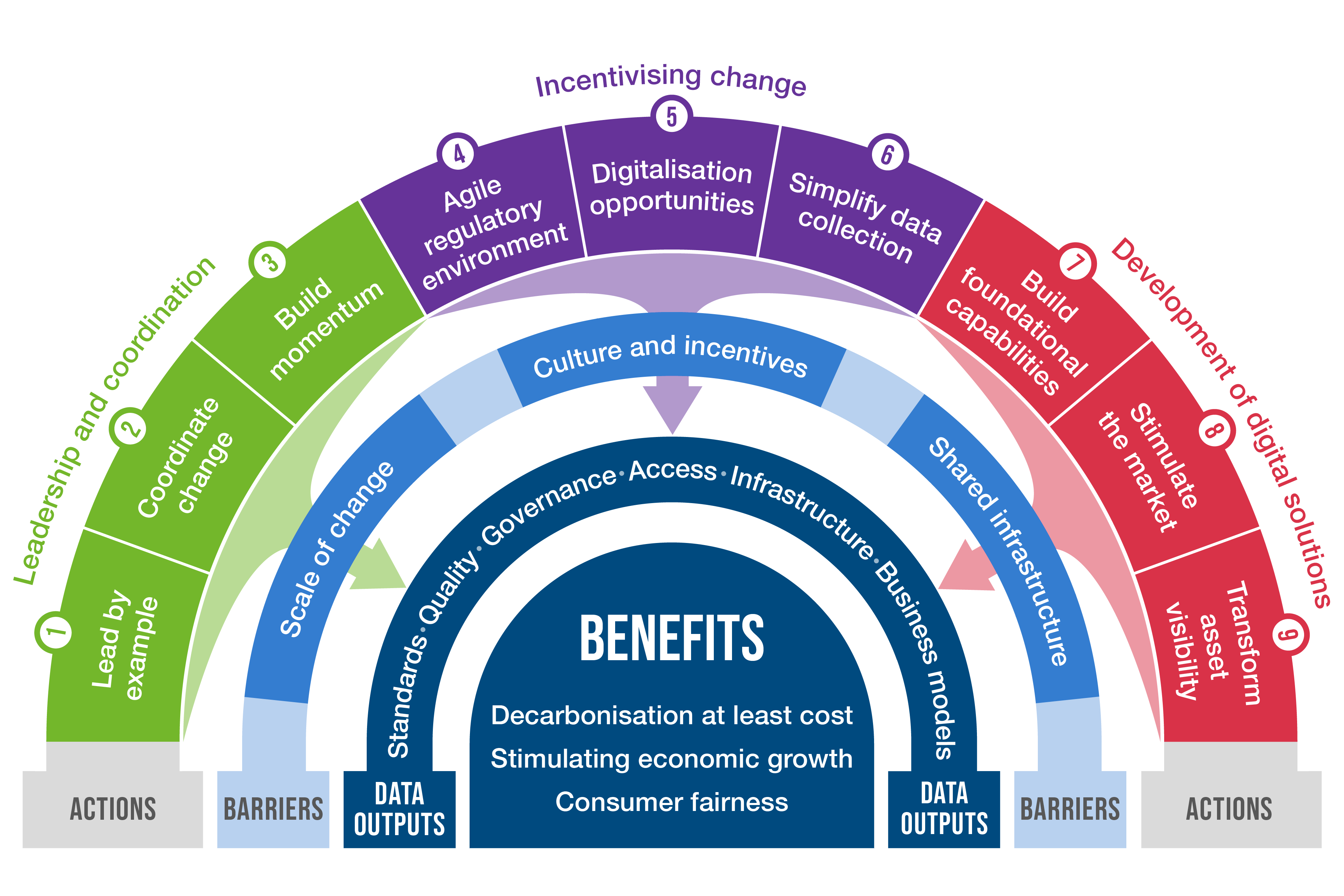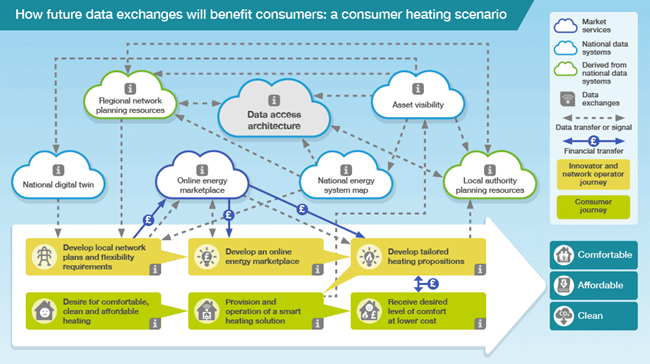Access to accurate and timely energy data is fundamental to operating a smart and flexible energy system. It enables us to make better, faster and more informed decisions. Whether you are managing power flows on the networks, deciding where to build and connect an EV chargepoint or a solar farm, developing or choosing an innovative product or service, or deciding national or local policy, energy data will play an ever-increasing role.
Regen has been working with the Department for Business, Energy and Industrial Strategy (BEIS), Ofgem and Innovate UK to illustrate how energy system digitalisation could improve the future consumer journey as part of the UK’s first Energy Digitalisation Strategy, which was published last month.
We picked the scenario of changing the heating technology in a home and looked at how a consumer could interact with innovators, network companies and various data systems and services. See below for a summary – a full interactive version of the graphic is available on our website here.
In this scenario, the automatic registration of a new smart heat pump is reflected in regional network planning resources and the national digital twin, which are used by network companies to develop their local network investment plans. An innovator responds to a network’s flexibility requirements by developing an online energy marketplace, which enables other innovators to develop new services that can benefit from flexibility market revenue. This brings us back to the consumer who is offered a smart heating solution from the innovator at a lower cost to reflect the flexibility they are providing the wider system.
This is just one of many scenarios where energy data can accelerate our transition to net zero by supporting investment decisions, enabling innovation and creating a smooth journey for the consumer. BEIS, Ofgem and Innovate UK recognise that a shared approach to accelerate the transition to a digitalised, net zero energy system is required to overcome barriers to change. Therefore, they published a joint Energy Digitalisation Strategy, which describes the benefits, barriers and actions required, which are summarised in our graphic below.

Highlights from the Strategy include:
- Getting the Energy Data Taskforce team back together to form a new Energy Digitalisation Taskforce to identify priorities and next steps
- Requiring network operators to comply with Energy Data Best Practice and Digitalisation Strategy and Action Plan guidance, as well as increase the visibility of their infrastructure and assets for stakeholders down to the low voltage level
- Developing processes to enable visibility of data on small-scale energy assets (e.g. for EVs and heat pumps)
- Improving the visibility of and access to data through projects such as Modernising Energy Data Access, Energy Data Visibility Project, and the National Energy System Map.
It’s now an accepted truth that the path to net zero will require a smart, flexible energy system with an increasingly central role for accurate and timely data. The next phase is likely to see more energy data being made open, a gradual improvement in the quality and interoperability of data, and new data products and services becoming available.

